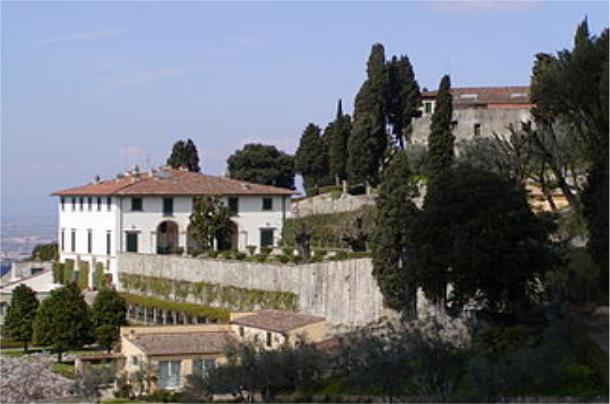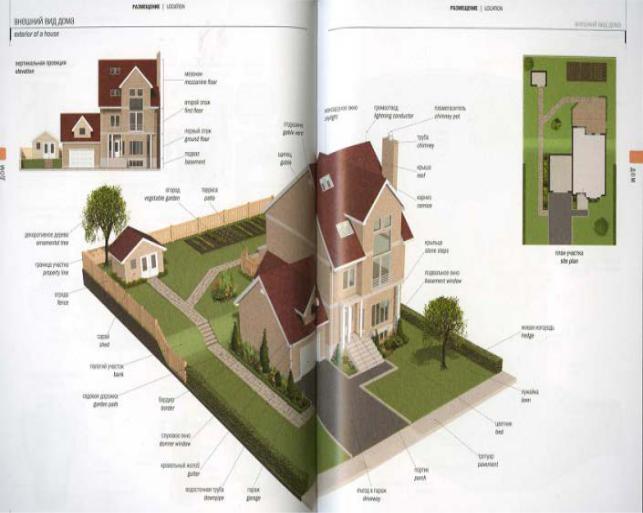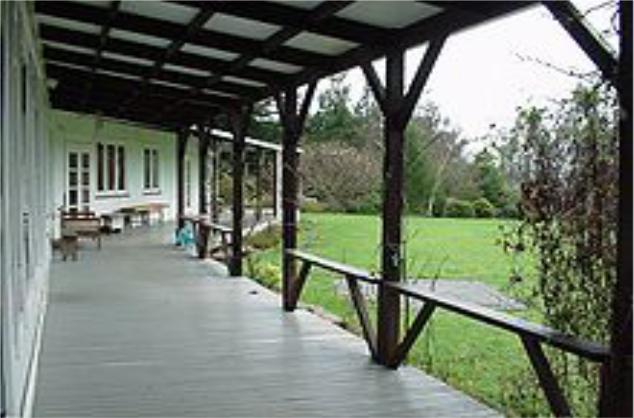
- •Введение
- •INTRODUCTION
- •Architecture as a scientific discipline
- •Cathedrals and great churches
- •A cathedral
- •Abbey
- •Belfry
- •Chapel
- •Baptistery
- •Monastery
- •Parts of religious architectural ensemble
- •CITY ARCHITECTURAL OBJECTS
- •Megalopolis
- •Street
- •Boulevard
- •Plaza
- •City block
- •Guard rail
- •Terrace
- •Race course
- •Viaduct
- •Interchange (road)
- •Town hall
- •Tower
- •Museum
- •Amphitheatre
- •Bridge
- •Causeway
- •ORNATE ARCHITECTURAL OBJECTS
- •Park
- •Pavilion
- •Grotto
- •Fountain
- •HISTORICAL ARCHITECTURAL OBJECTS
- •Fire tower
- •Kremlin
- •Fortress
- •Barn
- •Izba
- •Log house
- •Presidio
- •Redoubt
- •Bastion
- •Palace
- •Castle
- •ELEMENTS OF A CASTLE
- •RESIDENTIAL STRUCTURES
- •Villa, cottage
- •Exterior
- •Veranda
- •Roof
- •Balustrade
- •Balcony
- •Parapet
- •Portico
- •Spire
- •Facade
- •INTERIOR
- •Basement
- •Hall
- •Enfilade
- •Attic
- •Staircase
- •Gallery
- •Mezzanine
- •Storey
- •Библиографический список

Задание 3. Используя рис. 166 и необходимые модели устной аннотации, расскажите об устройстве замка.
|
|
|
|
И |
|
|
|
Д |
|
|
|
А |
|
|
|
б |
|
|
|
и |
Рис. 166 |
|
||
|
|
|
||
RESIDENTIAL STRUCTURES |
||||
С |
|
Villa, cottage |
||
|
|
|||
A villa was originally an ancient Roman upper-class country house. Since its origins in the Roman villa, the idea and function of a villa have evolved considerably. After the fall of the Roman Republic, villas became small farming compounds, which were increasingly fortified in Late Antiquity, sometimes transferred to the Church for reuse as a monastery. Then they gradually re-evolved through the Middle Ages, into elegant upper-class country homes. In modern parlance 'villa' can refer to a various types and sizes of residences, ranging from the suburban "semi-detached" double villa to residences in the wildland-urban interface.
114
A cottage is, typically, a small house. The word comes from England where it originally was a house that has a ground floor, with a first, lower storey of bedrooms which fit within the roof space. In many places the word cottage is used to mean a small old-fashioned house. In modern usage, a cottage is usually a modest, often cosy dwelling, typically in a rural or semi-rural location. In the United Kingdom the term cottage denotes small rural dwellings of traditional build, although it can also be applied to dwellings of modern construction which are designed to resemble traditional ones ("mock cottages").
In the United States the word cottage is often used to mean a small holiday home. However there are cottage-style dwellings in cities, and in places such as Canada the term exists with no connotations of size at all (cf. vicarage or hermitage). In certain countries (e.g. Scandinavia, Baltics, and Russia) the term "cottage" has local synonyms: In Finnish mökki; in Estonian suvila; in Swedish stuga; in Norwegian hytte (from the German word Hütte); in Slovak chalupa; in Russian дача (dacha; which can refer to a vacation/summer home,
often located near a body of water). In the USA this type of summer home is |
|||||||
more commonly called a "cabin", "chalet", or even "camp". |
|||||||
Задание 1. |
|
|
|
|
И |
||
Дайте определение понятиям villa, cottage. |
|||||||
Задание 2. |
|
|
|
Д |
|
|
|
Заполните пустые графы таблицы. |
|
|
|||||
|
|
|
А |
|
|
|
|
|
Definition |
|
|
|
Translation |
||
Вилла – загородный дом с |
садом или |
|
|
|
|||
парком |
|
б |
|
|
|
|
|
и |
|
|
|
|
|
||
|
|
|
|
|
|
||
Коттедж − сельский или городской |
|
|
|
||||
одноквартирный индивидуальный жилой |
|
|
|
||||
дом, при котором имеется |
небольшой |
|
|
|
|||
участок земли |
С |
|
|
|
|
|
|
|
|
|
|
|
|
|
|
Задание 3. Постройте развернутый план текста, отразив в нем |
|||||||
ключевую информацию. |
|
|
|
|
|
|
|
Задание 4. Определите, какие модели аннотирования применимы к следующей информации: However there are cottage-style dwellings in cities, and in places such as Canada the term exists with no connotations of size at all:
-The writer attracts our attention to the fact that…
-The author starts by telling the reader about…
-The author summarize that...
115

Задание 5. Продолжите предложения: In many places the word cottage…
A villa was…
After the fall of the Roman Republic,… The text…provides much information on… The text……gives figures illustrating
The text……carries a photograph of
I find the data on… useful (informative, interesting, up-to-date, disputable), because…
The idea of... appears (seems) to have practical interest. In conclusion I can say…
The concluding part of my report contains notes on...
We can make a conclusion that… |
|
И |
|||
My conclusions (results) based on….. |
|||||
|
|||||
Задание 6. Опишите, какие объекты архитектуры вы видите на рис. |
|||||
|
|
|
Д |
||
167. В описание включите характеристику объектов. |
|||||
|
|
А |
|
||
|
б |
|
|
||
и |
|
|
|
||
С |
|
|
|
|
|
Рис. 167
116

Задание 7. Используя рис. 168 и информацию данных ниже текстов, расскажите об устройстве дома (коттеджа, виллы).
|
|
|
|
И |
|
|
|
Д |
|
|
|
А |
|
|
|
б |
|
|
|
и |
|
|
|
|
С |
|
Рис. 168 |
|
|
|
|
|
||
Exterior
Veranda
A veranda or verandah is a roofed opened gallery or porch. The word commonly refers to balconies on cruise ships and some hotel properties. It is also described as an open pillared gallery, generally roofed, built around a central structure. A veranda is often partly enclosed by a railing and frequently extends across the front and sides of the structure (рис. 169).
117

АРис. 169ДИ
The veranda has featuredбquite prominently in Australian vernacular architecture and first becameиwidespread in colonial buildings during the 1850s. The Victorian Filigree architecture style is used by residential (particularly terraced houses inСAustralia and New Zealand) and commercial buildings
(particularly hotels) across Australia and features decorative screens of wrought iron, cast iron "lace" or wood fretwork. The Queenslander is a style of residential construction in Queensland, Australia, which is adapted to subtropical climates and characterized by its large verandas, often in the Filigree style.
The Creole Townhouse in New Orleans, Louisiana is also noted for its prominent use of verandas.
Spanish colonial architecture (as well as the "Mission style" revivalist version that became popular in the Western United States in the early 1900s) commonly incorporates verandas, both on the exterior of buildings and, in cases of buildings with courtyards, along the interior walls of courtyards. In some cases, homes were constructed with every room opening into a courtyard veranda, rather than interior corridors or direct connections to other rooms (рис. 170).
118
